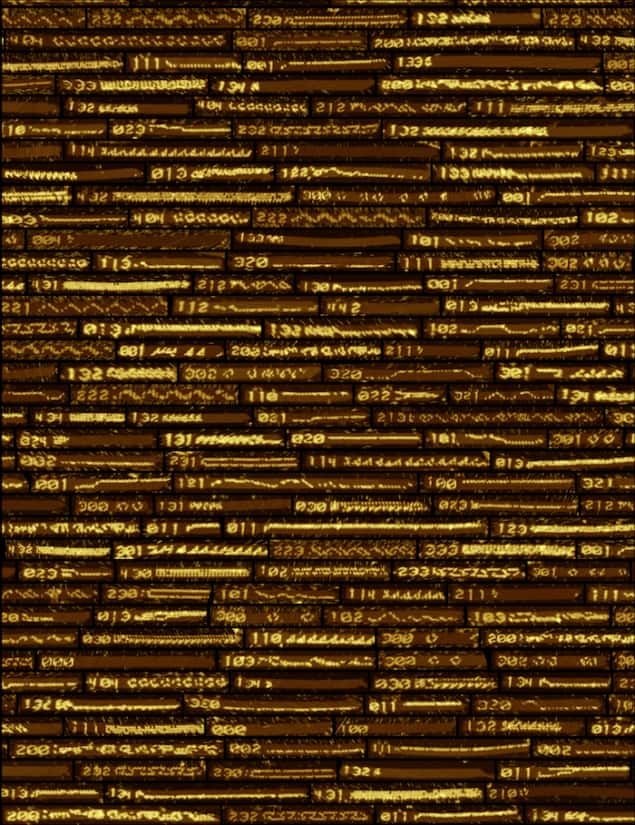 Molecular programming wall. Courtesy: Damien Woods (Maynooth University)
Molecular programming wall. Courtesy: Damien Woods (Maynooth University)
 Molecular programming wall. Courtesy: Damien Woods (Maynooth University)
Molecular programming wall. Courtesy: Damien Woods (Maynooth University)
Researchers have designed a tile set of DNA molecules that can carry out robust reprogrammable computations to execute six-bit algorithms and perform a variety of simple tasks. The system, which works thanks to the self-assembly of DNA strands designed to fit together in different ways while executing the algorithm, is an important milestone in constructing a universal DNA-based computing device.
The new system makes use of DNA’s ability to be programmed through the arrangement of its molecules. Each strand of DNA consists of a backbone and four types of molecules known as nucleotide bases – adenine, thymine, cytosine, and guanine (A, T, C, and G) – that can be arranged in any order. This order represents information that can be used by biological cells or, as in this case, by artificially engineered DNA molecules. The A, T, C, and G have a natural tendency to pair up with their counterparts: A base pairs with T, and C pairs with G. And a sequence of bases pairs up with a complementary sequence: ATTAGCA pairs up with TGCTAAT (in the reverse orientation), for example.
The DNA tile
An essential building block in DNA nanotechnology for programmable self-assembly is the DNA tile, which binds through the above Watson-Crick complementary domains to several neighbours arranged on a 1, 2 or 3D lattice. Only a few DNA tile types (each with the same motif but making use of different sequences) are needed to program the self-assembly of large, micron-sized, crystalline structures in which each tile appears periodically.
In this work, the DNA tile set is a collection of short (42 nucleotide) DNA strands designed to fit together into a fabric like a jigsaw puzzle. “Unlike a jigsaw puzzle, however, where each piece fits exactly in one place, our algorithmic tiles can fit together in many different ways depending on the ‘input’,” explains Erik Winfree from the California Institute of Technology (Caltech), who co-led this research study. “The input here is another self-assembled DNA structure, called ‘DNA origami’, which can be designed to carry DNA strands representing any six-bit binary number of choice.”
An arbitrary six-bit Boolean circuit
The input structure in fact acts as a seed for the crystallization of the DNA tiles, forming a DNA nanotube that carries out a computation based on how the tiles fit together, he adds. “Roughly speaking, each new layer of growth on the nanotube represents one more iteration of a six-bit Boolean circuit. We can program the circuit by choosing which strands from a master set are mixed together in a given experiment.
The researchers say they can program a master set of 355 DNA tiles (by selecting the right subset of 100 strands) to compute an arbitrary six-bit circuit. “There are 244 (17 trillion) such circuits possible and although not all of these are interesting, we implemented 21 circuits that display a surprisingly wide range of behaviours,” says Winfree.
“My favourite is an odd little circuit that acts like a clock. It starts with 000010, goes to 011001 and then to 001010. Next, and in a strange order, it goes to 60 other bit patterns before returning to 000010 and repeating the sequence.”
The experiment is limited to six-bit inputs because of certain technical engineering constraints, related to the geometry of the DNA nanotubes, explains study co-lead author David Doty of the University of California, Davis. “With the right DNA tile design though, there’s every reason to think that we could make systems processing far more bits as reliably, or even more so, by amplifying our error-correction techniques in ways we already know.”

